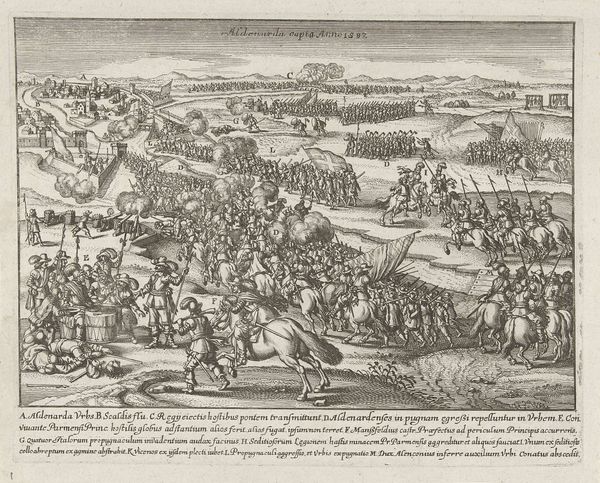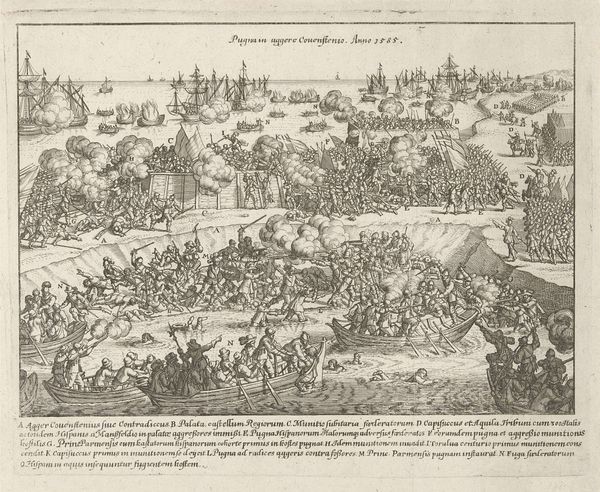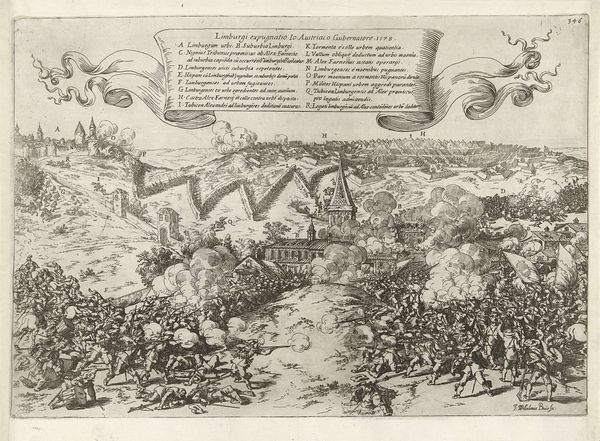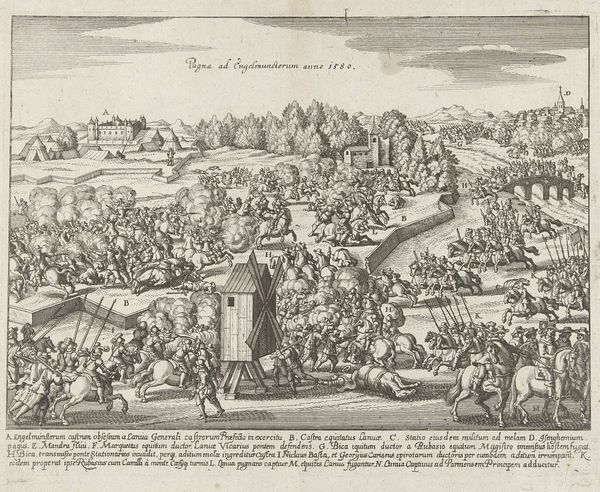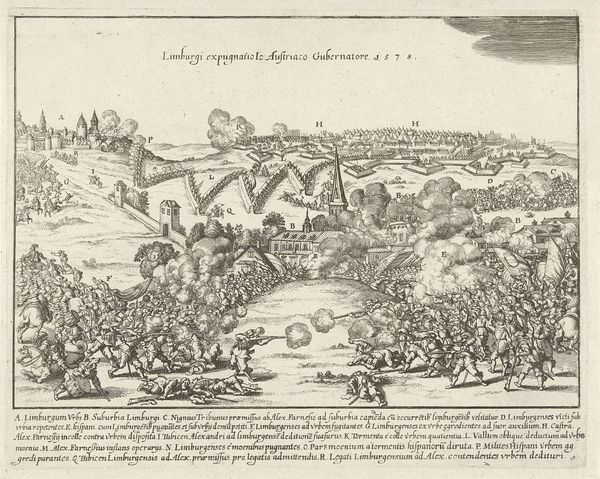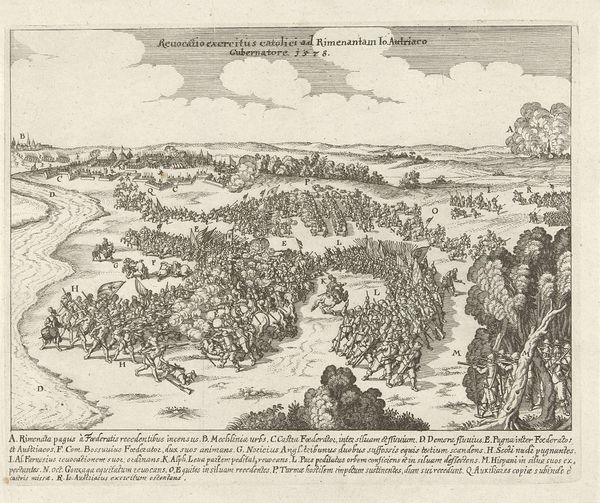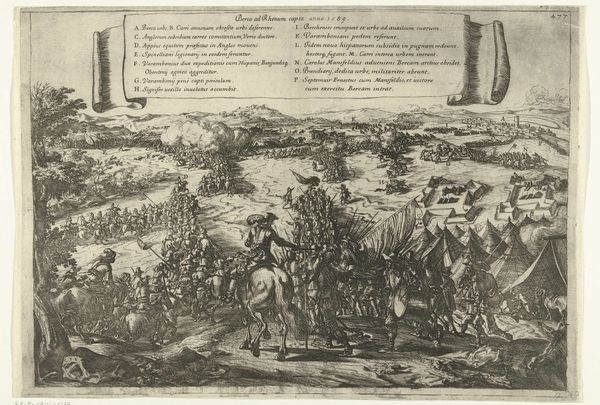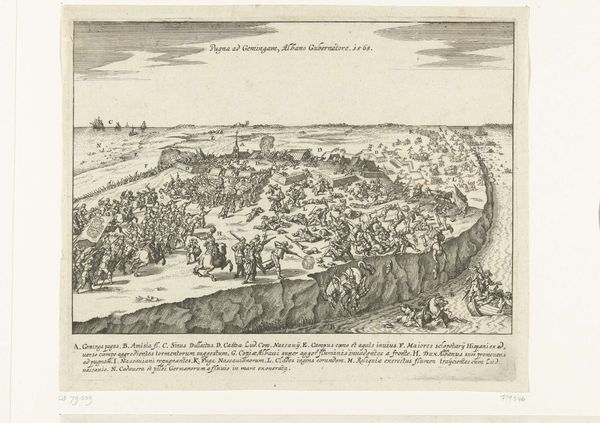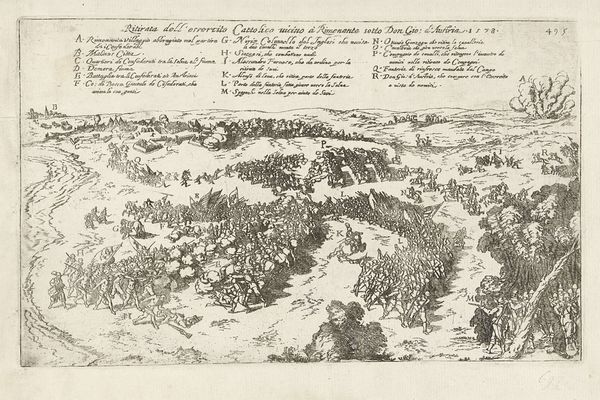
print, engraving
#
baroque
# print
#
old engraving style
#
landscape
#
cityscape
#
history-painting
#
engraving
#
realism
Dimensions: height 185 mm, width 303 mm
Copyright: Rijks Museum: Open Domain
Editor: Here we have a print titled "Verovering van de stad Limburg, 1578," which translates to "Conquest of the City of Limburg, 1578." It's an engraving dating sometime between 1630 and 1699. Looking at the dense composition, all those tiny figures engaged in battle… what can you tell me about its context? Curator: Well, let's consider this depiction of the Siege of Limburg through a critical lens. It’s not simply a neutral historical record. How might this print function as propaganda, shaping public perception of the conflict between the Spanish and the Dutch? What does it tell us about power structures and representation? Editor: Propaganda, interesting! I hadn't really thought of it that way. I was more focused on the purely historical. So, how can we see the political agenda reflected in the artistic choices made in this piece? Curator: Notice the overwhelming presence of the Spanish troops. How might this depiction of force and order have reinforced ideas about their power? And conversely, consider how the Limburgers are portrayed - does their resistance get as much attention? Are they romanticized or vilified, and what social narrative does this promote? Editor: They do seem to be on the run. The print certainly leans toward a glorified representation of Spanish military might. Perhaps that's why they included all that text with a key to explain the city and forces, too? Curator: Exactly! The labels aren't just descriptive. They guide our interpretation. Ask yourself, who commissioned this work, and what purpose did it serve within the broader context of the Eighty Years’ War? What about its potential role in constructing national identity during that tumultuous time? Editor: That really shifts my understanding. I was seeing a straightforward depiction of a historical event, but now I see the complex layers of political messaging and power dynamics at play. Curator: Precisely. Art isn't created in a vacuum; understanding its historical and social context is key. It encourages a critical dialogue, situating art within broader intersectional narratives. Editor: I see that so much more clearly now. Thanks!
Comments
No comments
Be the first to comment and join the conversation on the ultimate creative platform.

